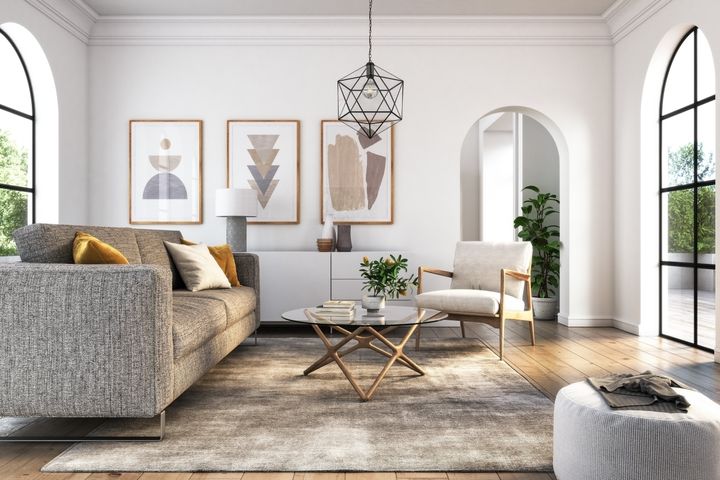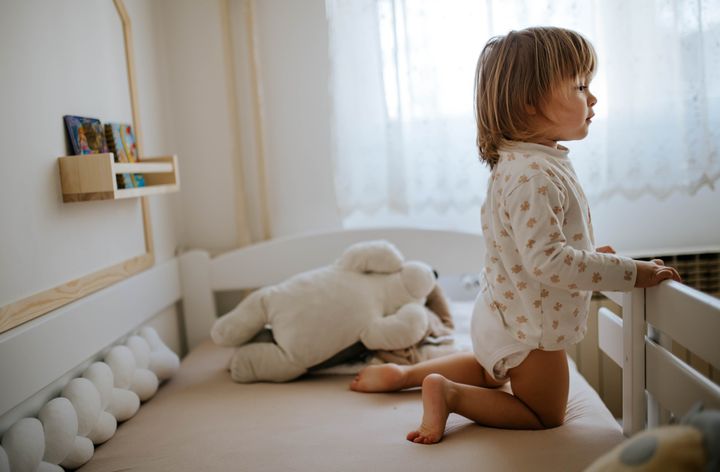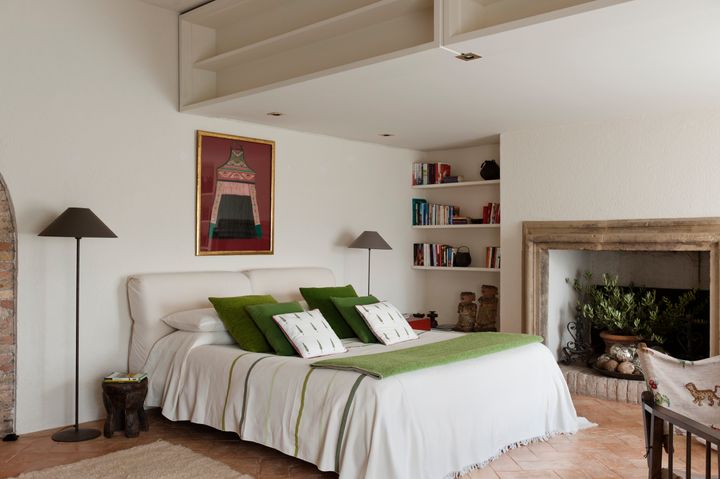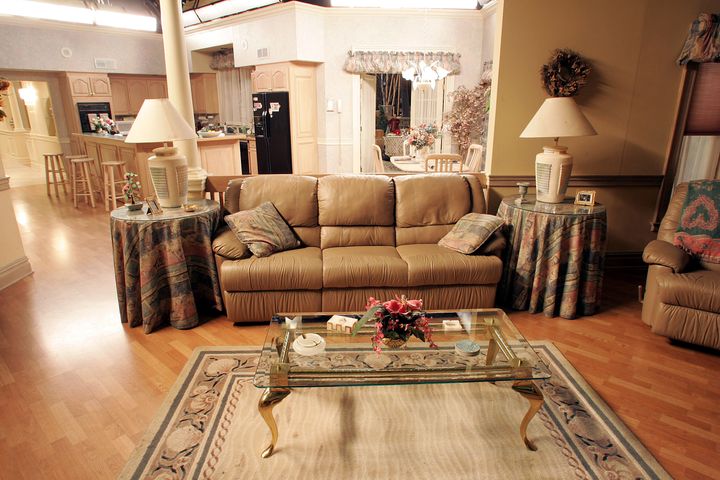News
Are They OK? The Psychology Behind ‘Millennial Gray’ Homes
A pop of color? Nah. For millennials, the default color palette for home interiors is 50 shades of gray.
Walk through a local open house. Click through your 30-something cousin’s Pinterest. Peruse your college roomie’s Instagram stories. You’ll quickly discover that millennials are seemingly allergic to color when it comes to home design.
Many others ― younger Gen Z especially ― have big feelings about that.
“Millennial gray [is] the sad depressive hue of the color gray which many millennials coat their life in,” is how one Urban Dictionary entry defines the term. “The color reflects how millennials went from non-sense happiness, looking at cartoon network and Nickelodeon in the ’90s to Inflation and depression in the early 2020’s.”
“May all the millennial gray house flippers that turn beautiful charming homes into soulless gray blobs stub their toe, never find parking or have another good hair day again, amen,” another person joked on X, the platform formerly known as Twitter.
On TikTok, some millennials are big enough to call themselves out for their drabby home design.
“Let me show you guys my house,” @victoria.thatsit says in one popular clip. “My bathroom: gray. My floor: gray. My counters: gray. Our mat: gray. That: gray. Our chairs: some type of gray. Our couches: gray. Our dog beds: gray.”
Even her two dogs are gray, Victoria admits, sounding a little aghast at the realization.
If a millennial is feeling especially cheeky, they might include a little green moment ― the famous millennial green couch, for instance ― but plenty of them will never venture too far from the gray aesthetic.
It’s not just the interiors that are decked out in inoffensive shades of gray; exteriors get the grayscale treatment, too. On real estate sites, there’s no shortage of modern farmhouses ― Chip and Joanna Gaines-esque homes featuring board and batten siding and painted in shades of gray, charcoal and black.
How did we get here? What’s going on in the millennial psyche to make such bland, almost corporate-minded neutrality so appealing to live in? Is the “all gray everything” aesthetic mind-numbingly mundane, or classic and calming? We have answers.
It’s a rebuff of their parents’ shabby chic, maximalist design sense.
If you grew up in the ’90s, your parents’ design taste was probably a little much: There was shabby chic aesthetic, with its lace and gingham and thrifty flea-market sensibility. Or the Tuscan-villa, Old-World “luxury” style we saw modeled in Tony and Carmela Soprano’s home. Then there was the Southwestern aesthetic, with its salmon, turquoise and beige colorway, geometric patterns, and powdery terra cotta lamps anywhere you could fit them.
After all that, millennials want simplicity in their homes, said Marissa Warner, an interior designer and owner of the Home Narrative in Ontario, Canada.
“The shades of gray trend really accommodate our desire to move away from the overstimulating chaos of our childhoods and towards a more serene environment,” she said.
In all those ’90s aesthetic trends, the through-line was beige. In many ways, millennials’ embrace of gray as their neutral of choice is just a repudiation of beige.
“There was an over-saturation of yellow ‘builder beige’ in the ’90s when most Millennials grew up,” said Loren Kreiss, a Los Angeles-based interior designer and CEO and creative director of Kreiss, a luxury furniture brand.
“I think it’s a natural reaction for Millennials to be allergic to warm colors as a result,” Kreiss told HuffPost. “Furthermore, the rise of Restoration Hardware over the last 10-15 years has shoved the ‘all gray everything’ aesthetic down everyone’s throat.”
Todd Plitt via Getty Images
Millennials tend to be an anxious bunch, and gray has a calming effect.
Psychologically, it’s not so much of a leap to see why millennials gravitate toward neutral and muted tones in their inner sanctums, said Jennifer Chappell Marsh, a marriage and family therapist in San Diego. From weathering two major economic collapses, climate anxiety, a student loan debt crisis and a housing crisis, millennials have sky-high stress rates. They want their home design to be streamlined and safe, even if it is a bit staid and overly West Elm-y.
“On the whole, millennials are looking to create a calm and stable environment,” Chappell Marsh said. “They’re big on minimalism and mindfulness.”
Given the outside chaos of the last decade or so, “an uncluttered house done up in palatable, neutral tones can provide a sense of stability and control,” she said.
“It’s like having one less thing to worry about in a world of uncertainties,” Chappell Marsh told HuffPost. “Keeping things simple can really help reduce stress and create a sense of order.”
A neutral color scheme makes sense if you prioritize environmental sustainability.
Many millennials value sustainability in their purchases, especially big-ticket buys. A 2023 Deloitte survey found that 60% of millennials are willing to pay more for sustainable products and services. Neutrals like gray play well with any passing trend, which means you won’t have to replace the items or paint your walls all that often.
Then there’s the stain-and-smudge factor. If you’re buying a pricey couch, a dark gray is much more stain-resistant and kid-proof than one in white, another neutral.
“This whole trend fits well with the millennial focus on sustainability and thoughtful consumption, as they prefer making choices that last and have less environmental impact,” Chappell Marsh noted.

CreativaStudio via Getty Images
Like the “sad beige parenting” trend, it’s gender neutral.
If you’re a straight couple trying to be equitable in your home design, gray is about as gender neutral as you can get. The gender neutrality of such colors is also why many millennial parents gravitate toward a “sad beige” color palette for their kids’ clothes and bedrooms.
This drab monochrome was dubbed “sad beige parenting” by humor writer Hayley DeRoche, who chronicles the offerings of upscale children’s retailers in the solemn voice of German filmmaker Werner Herzog on her TikTok account, That Sad Beige Lady.
The idea is that both beige and gray offer a blank slate, a canvas upon which a child’s personality can be painted.
“Neutral colors help avoid those old-school gender stereotypes, aligning with more inclusive and non-binary values that many millennial parents and couples support,” Chappell Marsh said. “They want their kids to grow up in an environment free from restrictive norms.”

TwentySeven via Getty Images
How to spice up a millennial gray house
Gracie Loebs, a realtor in Northern Virginia, doesn’t think the grayification of homes is going away any time soon, at least in her region.
“We are seeing lots of gray and white interiors within new construction and within flips, and millennials still seem to be placing strong offers on those types of homes,” she said.
Kreiss, on the other hand, thinks millennial gray is near-finished in urban areas. Even mass-produced furniture chains are backing away from the color, he said.
“I’ve seen a shift towards maximalism and ‘grandma-core’ which I think might even be worse,” he said. “Think your grandmother in the English countryside, but hipster: stripes, checkers, and other cheekily ironic and contrived design choices. Everyone wants their house to look like it’s old now.”
What if you’re somewhere in the middle ― a millennial (or someone of any age) who wants to update or freshen up a predominantly gray home without going full-on grandma-core?
“I’d suggest color in more subtle ways,” Kreiss said. “Green is certainly a fan favorite, but in more soft sage hues.”

Andreas von Einsiedel via Getty Images
“I think millennials are wanting color added to their environments in more organic ways, such as living greenery paired with a statement chair that has charm and character,” he said. “There is a bit more meaning behind it.”
Kreiss would also love to see millennials embrace more curated homes filled with handmade furniture from local businesses, vintage finds and other pieces with lots of personal meaning.
Warner, the other interior designer, suggests adding a pop of color through artwork.
“Furniture and artwork ― pieces that are unique finds, with a story ― are a great way to warm up a space,” she said. “They add character and color while also infusing your personal style. My best advice is to treat your millennial gray as a canvas worth adding to.”

